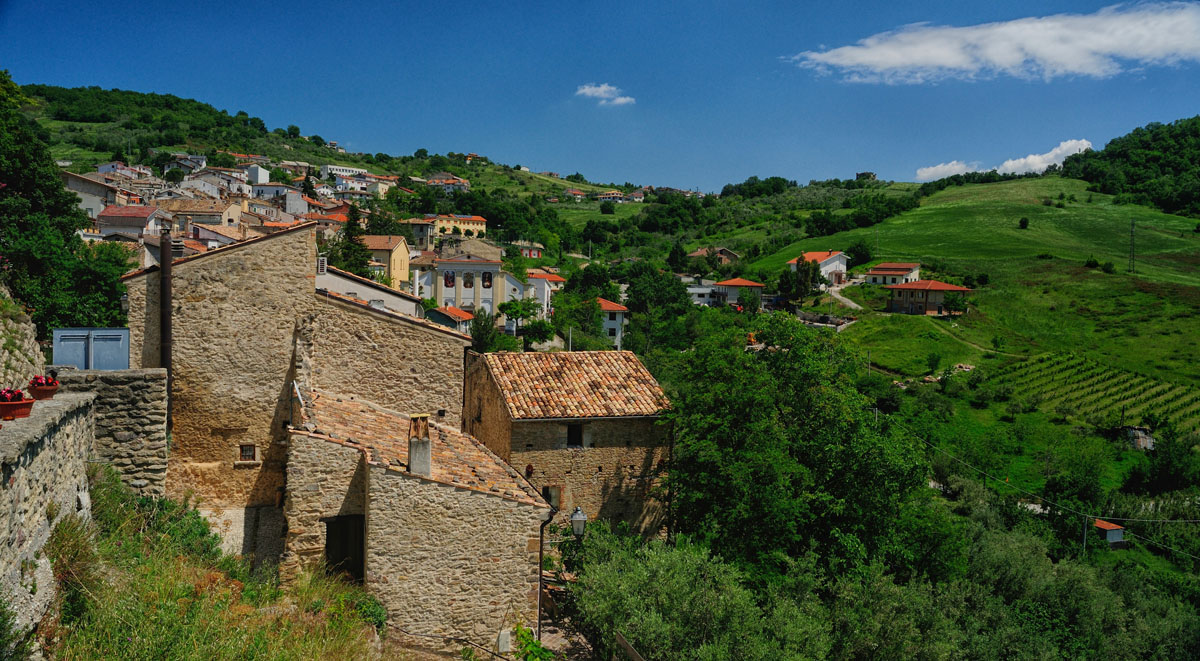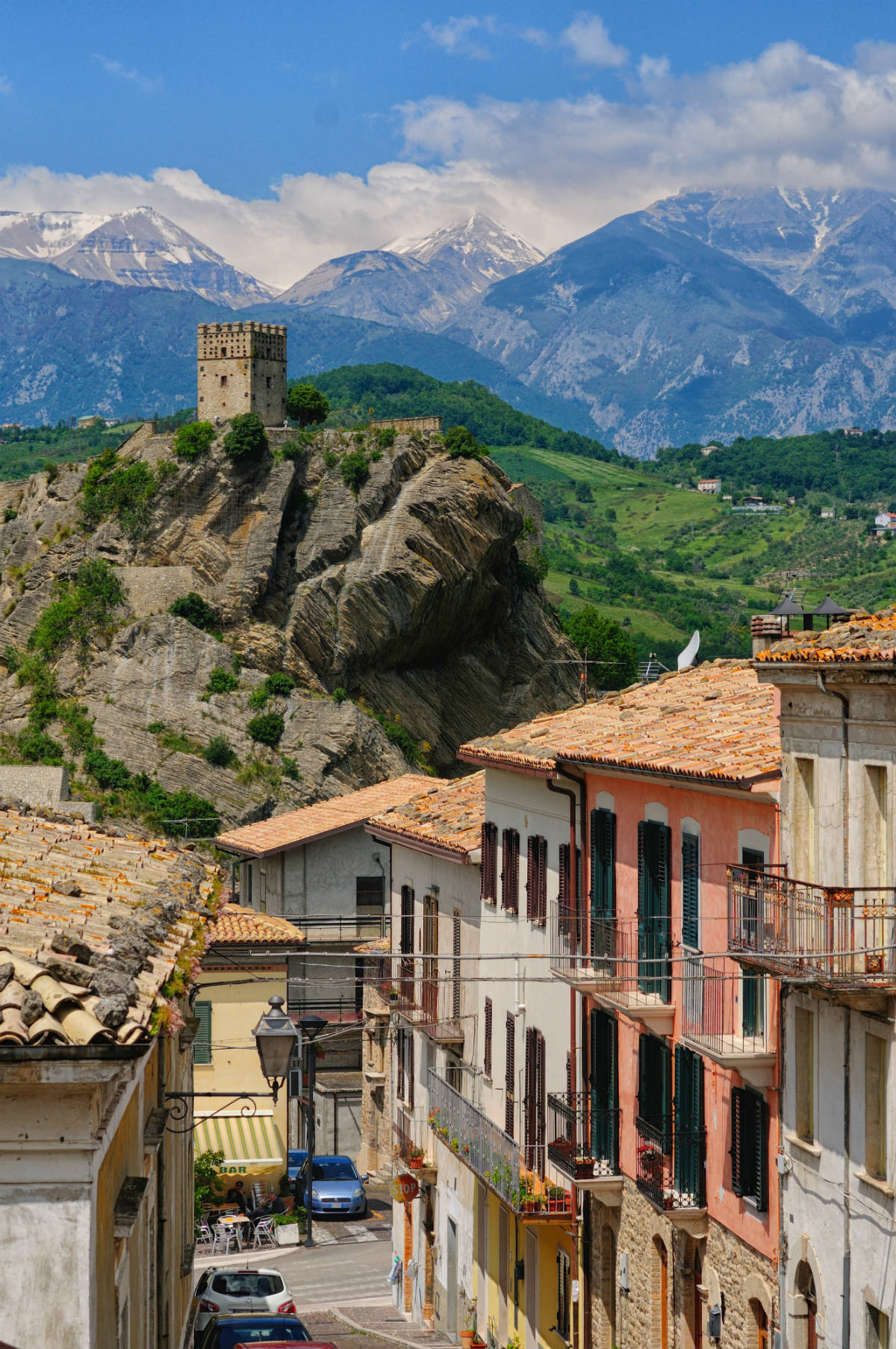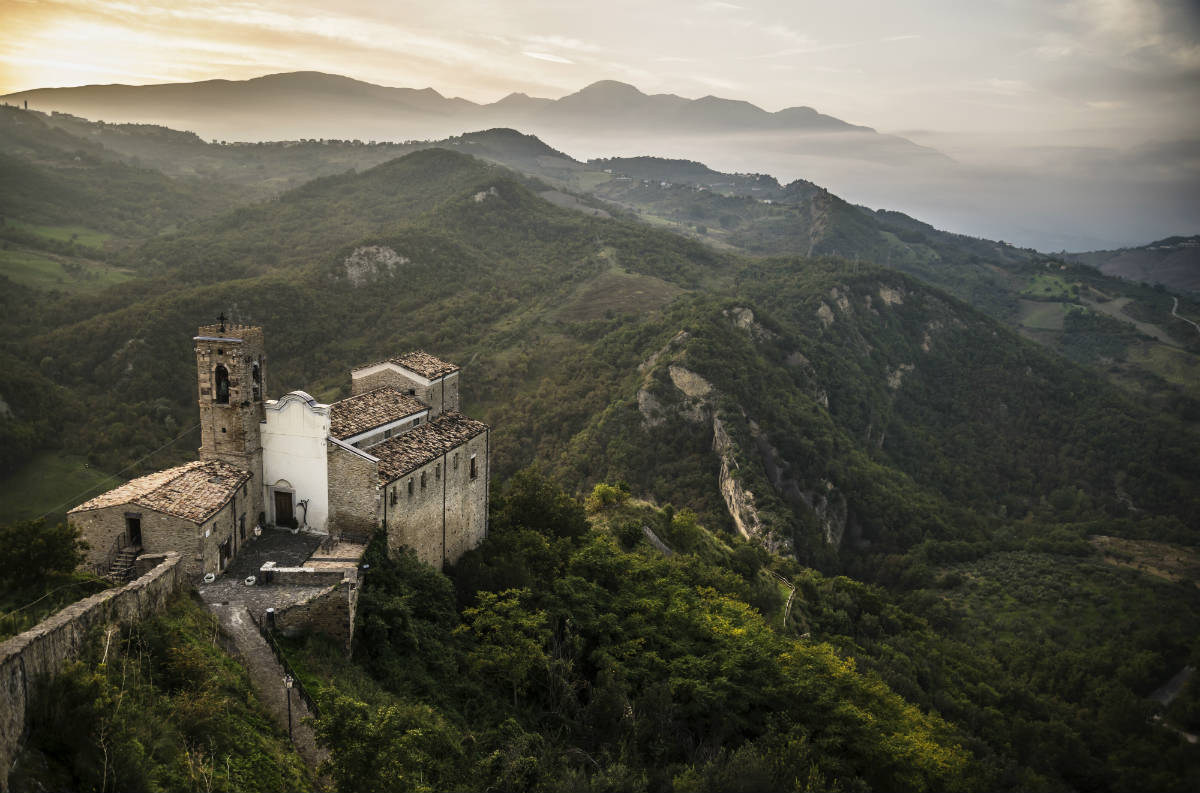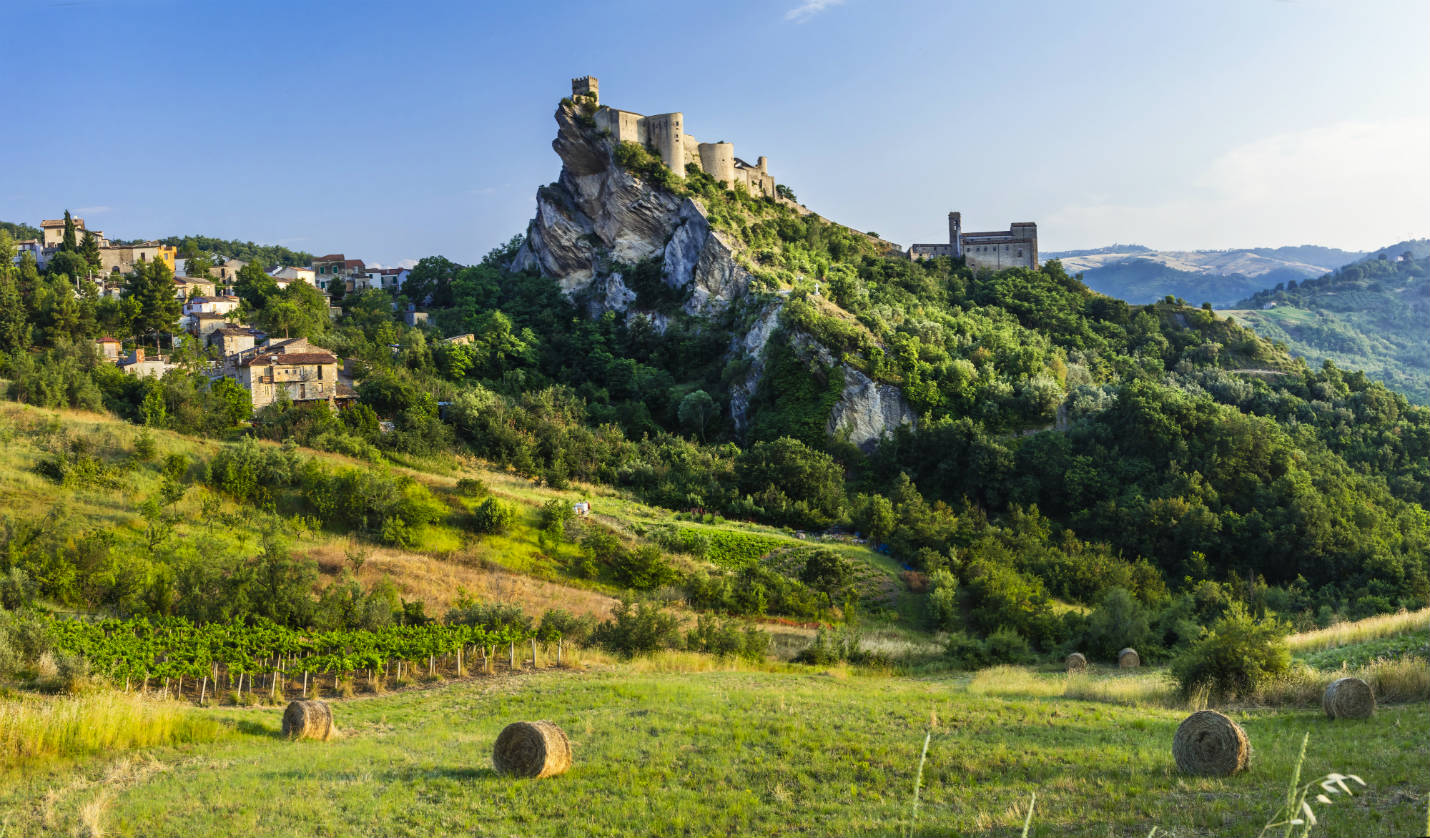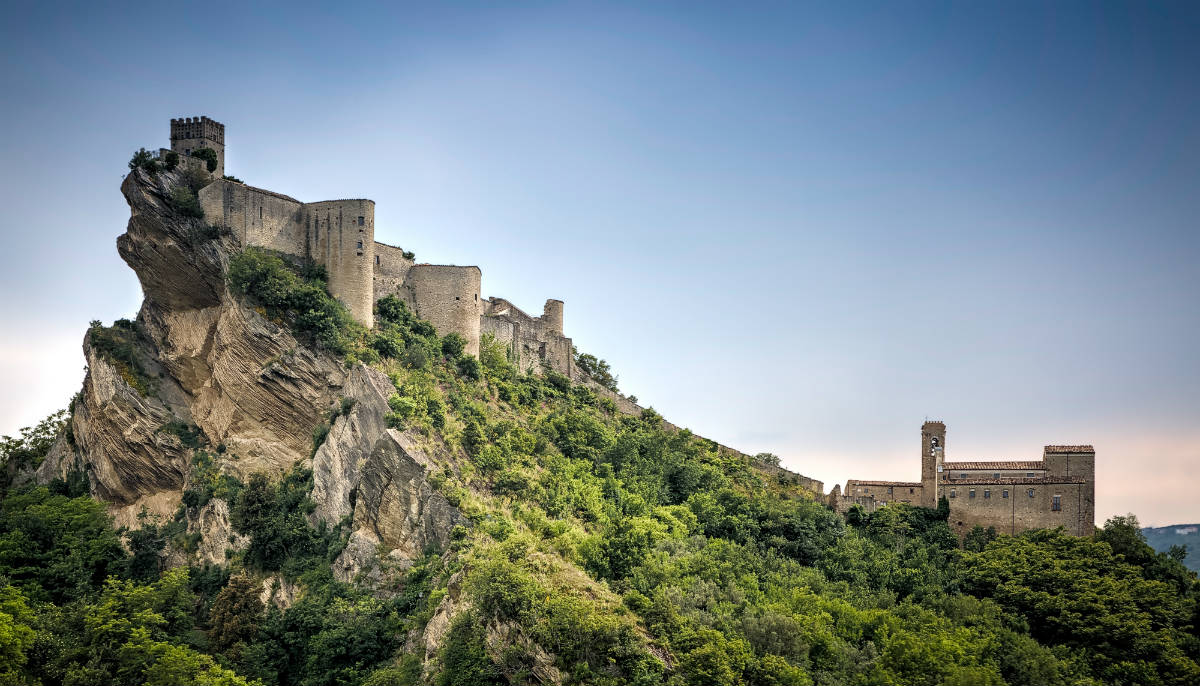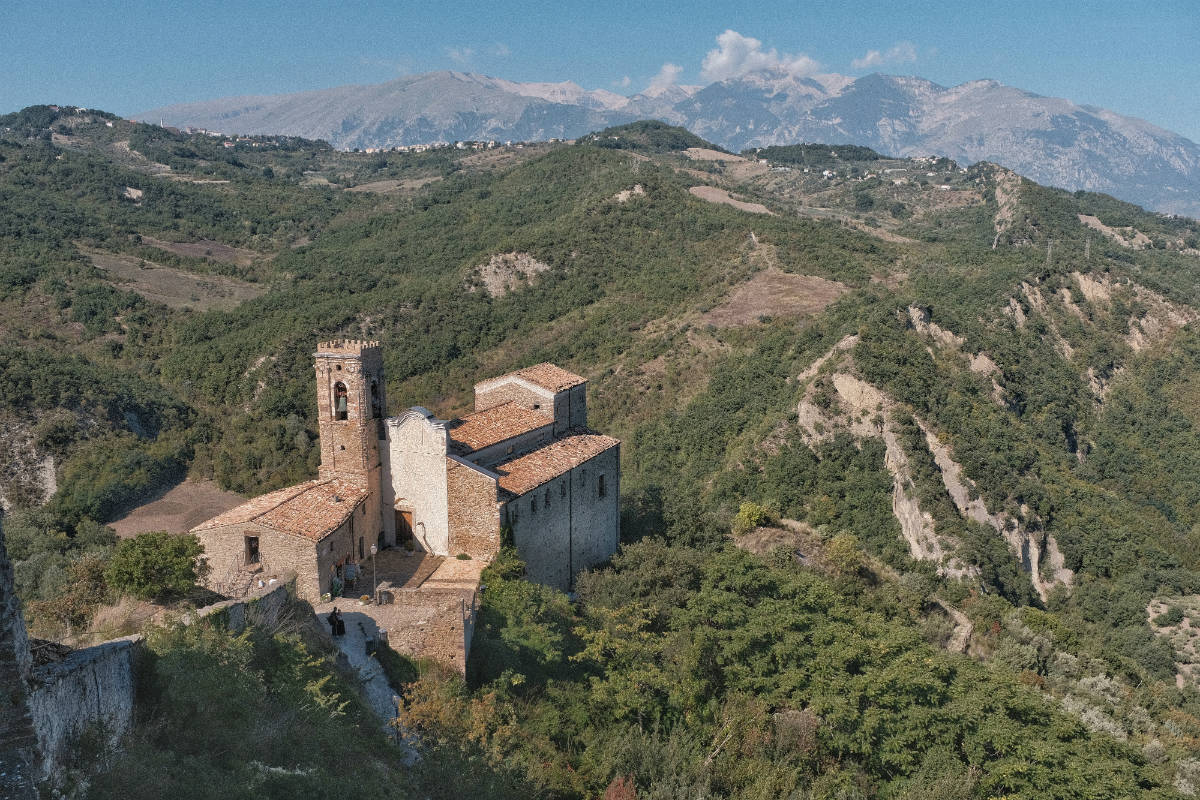The Catalogus Baronum 1379 indicated the village as a fortress-scarengia, and studies of the french language ancient argued that "scalegna" derives from scarengia or scarenna i.e. cliff escarpment or ravine, indicating the side of the spur on which is placed the Rocca.
The origin of the country is of the XII century, more precisely in 1160, perhaps on a pre-existing settlement. Certain however and that in the locality Collelongo were found the remains of the Eneolithic Period and in Capriglia and Colle Cicero of the ruins of the Roman era.
However of the monks, probably already existed in the area as for the Church of San Pancrazio already existing in the 829. The current church dates back to 1205 as reconstruction of the pre-existing church. Originally the village has emerged as the Longobard outpost for the control of the valley of the Rio Secco to defend the area against the Byzantines. The Longobards erected, where now is the Castle of Roccascalegna, a tower of sighting. Then came first the Franks, then the Normans. The true and own castle, however, is probably, of the norman period. In 1320 Roccascalegna is appointed during the Angevin period "cum castellione", at the time, then the castle already existed.
The Castle of Roccascalegna dominates, on a spur with sides a ravine, valley of the del Rio Secco, tributary to the left of the Sangro. Then, excluding a bubble accounts of 1320, the castle of Roccascalegna falls into oblivion until 1525, an era in which there occurs a restoration because the introductions of new, to the epoch, firearms. Instead, in 1705, is a second restoration, but this time it is the monumental entry ramp. A new period of oblivion strikes the castle until 1985, when the last feudal family (the cross Nanni) gives to the common castle, which immediately begins a work of restoration completed only in 1996, restoration that will lead to its ancient splendour the castle.
The village is located at the foot of the fortress and is composed of houses in turn composed of one or two floors, partly ruined by the carelessness up to become a ruin and partly restored to be inhabited site in the track that leads that follows the feet of Monticello where is the site of the castle. Track ending at the access of the castle itself at the Church of San Pietro.


